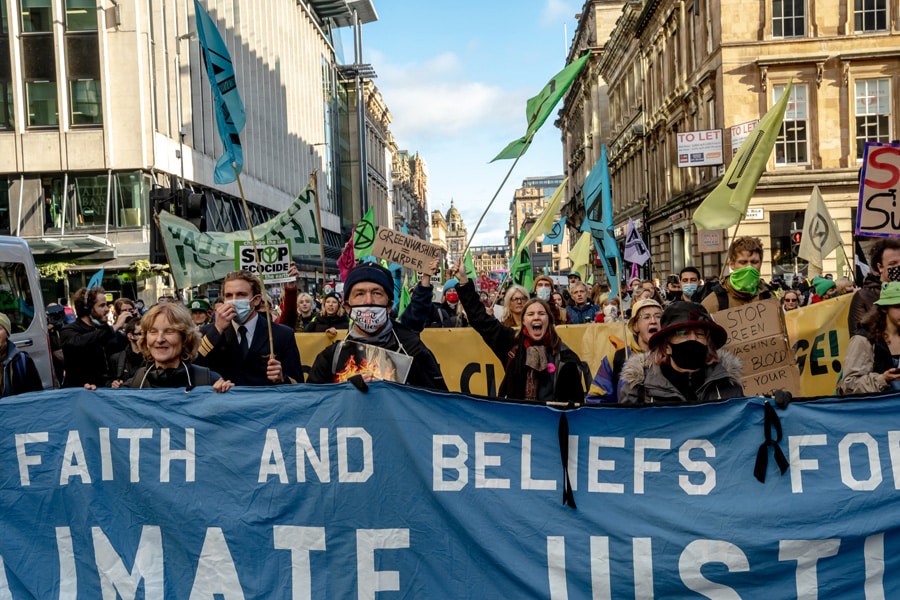
Our climate future is in the hands of a few world leaders
Two weeks of discussions in Glasgow at COP26 came to a close with an agreement, which even if countries fulfill, will still put the world on a dangerous path toward a planet that will be warmer by some 2.4 degrees Celsius by year 2100, compared with preindustrial times
 A march organized by environmental groups and activists during the United Nations global conference on climate change in Glasgow, Scotland, Nov. 3, 2021. In Washington, Beijing, New Delhi and beyond, governments face conflicting forces — political, social and economic — that will shape their next steps in the effort to avert a climate crisis. (Andrew Testa/The New York Times)
A march organized by environmental groups and activists during the United Nations global conference on climate change in Glasgow, Scotland, Nov. 3, 2021. In Washington, Beijing, New Delhi and beyond, governments face conflicting forces — political, social and economic — that will shape their next steps in the effort to avert a climate crisis. (Andrew Testa/The New York Times)
GLASGOW, Scotland — After two weeks of lofty speeches and bitter negotiations among nearly 200 nations, the question of whether the world will make significant progress to slow global warming still comes down to the actions of a handful of powerful nations that remain at odds over how best to address climate change.
The United Nations global conference on climate change closed Saturday with a hard-fought agreement that calls on countries to return next year with stronger emissions-reduction targets and promises to double the money available to help countries cope with the impacts of global warming. It also mentions by name — for the first time in a quarter-century of global climate negotiations — the main cause of climate change: fossil fuels.
But it did not succeed in keeping the world from averting the worst impacts of climate change. Even if countries fulfill all the emissions promises they have made, they still put the world on a dangerous path toward a planet that will be warmer by some 2.4 degrees Celsius by year 2100, compared with preindustrial times.
That misses by a wide margin the target of limiting warming to 1.5 degrees that scientists say is necessary to avert the worst consequences of warming. And it sets the stage for worsening storms, wildfires, droughts and sea-level rise as well as the social and economic upheaval that would accompany a widening climate crisis.
A relative handful of political leaders around the world — in capital cities such as Washington, Beijing and New Delhi — hold much of the influence over whether those promises are kept and the arc of warming can be sufficiently bent away from disaster. But they face a complex combination of pressures: industry interests that stand in the way of regulations, demands from developing countries for money to help them transition away from fossil fuels, and an increasingly vocal movement among citizens to rein in emissions more quickly and deliver what they call climate justice.
©2019 New York Times News Service







